Never mind the chateaux, food is the main reason why many travelers visit France, and this guide to the best French food is here to help you work up an appetite before your next trip to this beautiful country.
Popularized internationally by Julia Child and the late Antony Bourdain, French cuisine is legendary. The Paris-founded Le Cordon Bleu produces the most prestigious chefs, while Michelin still sets the standard for food excellence.
The best French food blends bold flavors, seasonal ingredients, and artistic presentation. France’s food landscape has evolved with the times. Marie-Antoine Careme systemized Haute Cuisine in the 19th century before passing the baton to Georges Auguste Escoffier.
Nouvelle Cuisine emerged during the 1960s to simplify French gastronomy without losing its sophistication or quality. Contemporary French fusion cooking flits between the two styles with dishes to suit every palate, every traveler.
Jump to a section of this article
An Overview of Traditional French Cuisine
France was the first country to have its culinary prowess inscribed on UNESCO’s Intangible Cultural Heritage list. The Gastronomic Meal of The French refers to at least four of the seven traditional courses being consumed: soup, starter, fish course, main course, salad, cheese, and dessert.
Courses are often bookended with aperitifs and digestifs. A pre-dinner aperitif is a lightly alcoholic beverage served with olives and nuts. The post-dinner digestif – a liqueur or brandy – carries a higher alcohol content.
French dining is as much about the shared experience as what’s on the table. Just as preparation is unhurried, no meal should be rushed in France.

Typical Ingredients in Authentic French Cooking
Fish, poultry, meat, and game are served year-round with potato and plant-based sides reflecting what’s in season. Garlic, shallots, butter, cream, and fresh herbs are the linchpins of many traditional French recipes. France produces close to 400 varieties of cheese. Subtle modifications push that number closer to 1,000.
There are five French Mother Sauces to add to your repertoire, from which Daughter Sauces derive.
- Bechamel – a white sauce paired with vegetable and poultry dishes.
- Espagnole – an aromatic brown sauce drizzled over red meat.
- Hollandaise – a tangy, emulsified sauce for eggs and vegetables.
- Red – a tomato-based sauce versatile enough for most dishes.
- Veloute – a light sauce made from chicken stock, ideal for fish and poultry.
And, bien sur, where there is French food, there is French wine. Vin Blanc and Vin Rouge are produced in all regions and wine is as fundamental to the table as salt and pepper.

Tittle Tattle & Tall Tales in French Kitchens
Behind every dish, there’s a story. For such a refined, precise cuisine, the histories behind France’s famous dishes are somewhat contested and often contradicted. If chit-chat wanes, dipping into the origins of the Plat du Jour is guaranteed to rouse good-natured debate.
Food tours are among the best food experiences in France for tasting local specialties and separating yarn from fact. Your JayWay trip advisor will be happy to sprinkle your France itinerary with the best cooking classes and food tours.
Best French Food: Top 15 Dishes To Try in France
Navigating French gastronomy can be overwhelming even for seasoned travelers and gastro gurus – there’s just so much choice. We’ve rounded up the top 15 French dishes you should eat on vacation. Bon appetite!
1. Soupe a l’Oignon
Soupe a l’Oignon (onion soup) is a quintessentially French starter served in Parisian bistros, medieval villages, and alpine taverns. Although it dates back to Ancient Rome, it went mainstream in the 18th century.
French onion soup as we know it today combines beef stock, yellow onions, and a splash of wine with a topping of bread and Gruyere cheese. The onions are slowly caramelized in butter in a Dutch oven on low heat before the stock is added.
Red or white wine is used for Soupe a l’Oignon. A full-bodied red wine can balance the flavors more effectively, especially with sweeter onions. Dry wines, such as Chardonnay, Sauvignon Blanc, Cabernet Sauvignon, and Merlot are typical.
Slices of toasted baguette garnished with grated Gruyere cheese are thrown in the simmering mixture.
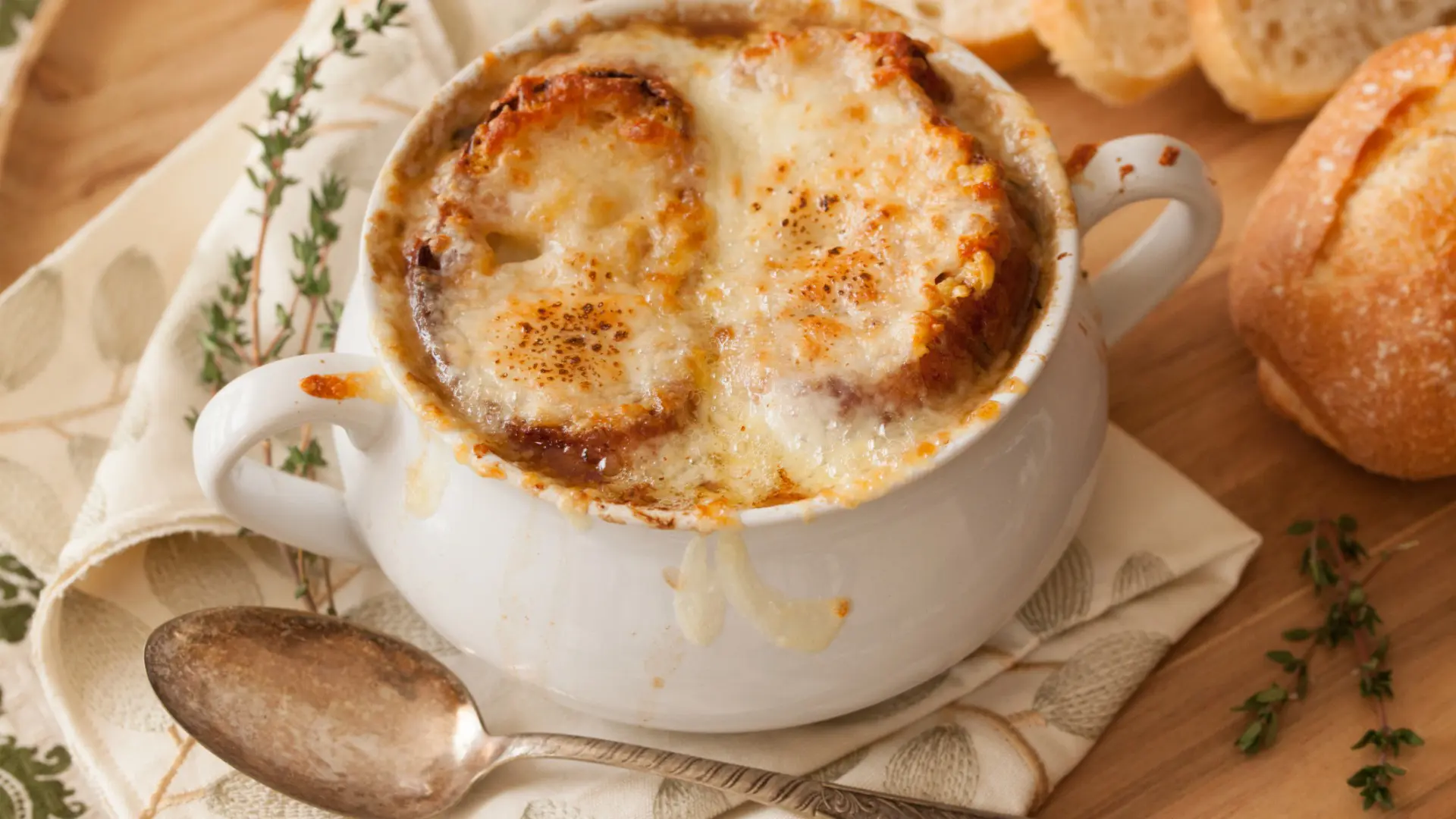
2. Chateaubriand
Chateaubriand refers to the cut used for this iconic French steak dish and its cooking method. The meat is cut from the tenderloin of a cow, a deep muscle bisecting the short loin and sirloin. As the name hints, it’s the most tender meat and every bite feels like a luxury.
Authentic preparation sees Chateaubriand pan-fried before being roasted in the oven. This results in a rare (or medium-rare) interior and a charred exterior. Chateaubriand is plated up on a cutting board with Pommes Chateau, seasonal greens, and wine-based sauce to drizzle as desired.
This upscale steak dish is only ever cooked for a minimum of two diners and makes for a romantic dining experience in Paris and beyond. It’s best enjoyed over a glass of Cabernet Sauvignon or Merlot – just make sure you each get your fair share.
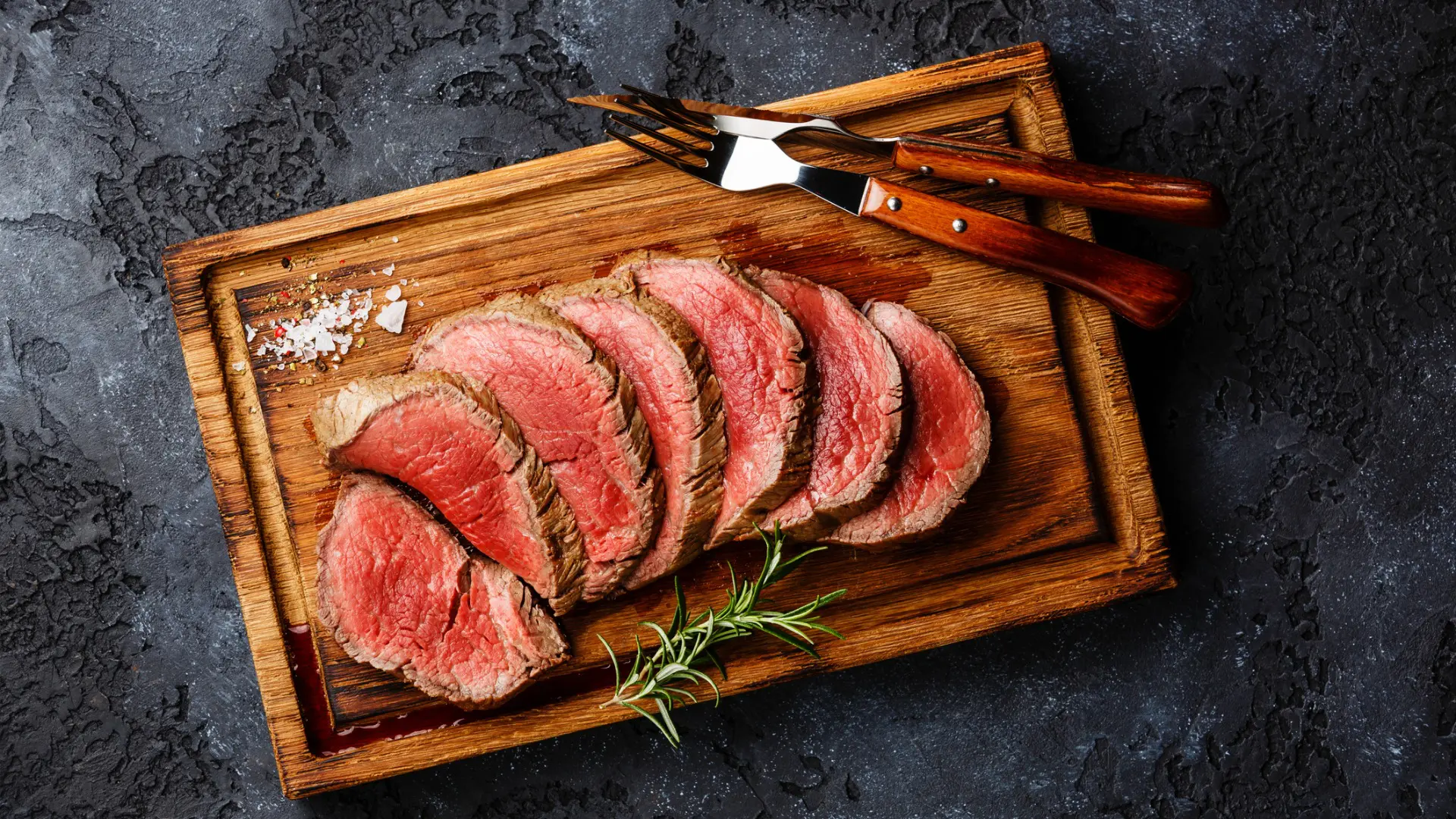
3. Souffle
A notoriously tricky dish to master, Souffle comes from the French verb souffler, which means to puff or to inflate in English.
Vincent La Chapelle masterminded French Souffle while employed as a cook in royal and aristocratic households. Marie-Antoine Carême went on to establish the toothsome dish as a cornerstone in Haute Cuisine.
Whether cooked as a savory starter or sweet pudding, it all starts by meticulously separating the egg yolks and whites. Any traces of yolk in the egg whites hinder the rising process. Gruyere or Comte cheese is the star ingredient for Souffle au Fromage, although mushroom and spinach are tasty deviations not to miss.
As a sweet dessert, Souffle au Chocolat never fails to impress. Lemon and vanilla are lighter alternatives for this decadent French dessert.
Souffle should always be served straight from the oven before the pastry has time to deflate.

4. Escargots
Escargots (edible land snails) are a must-try dish in France. Snails are a delicacy and they appear on menus in most cities and rural regions as hors d’oeuvres. Most of France’s Escargots are farmed in the Burgundy region.
Classic recipes see Escargots stirred in a sauce of butter, garlic, and parsley. They have a similar consistency to mussels which makes sense as they’re part of the mollusk family.
Before cooking, the snails are removed from their shells for thorough cleaning. Once sauteed, the meat is returned to the shell and served on a sharing platter. A tong is provided to grip the shell while the two-pronged snail fork prises out the meat.
Escargot Vol-Au-Vent is another delicious snail starter to eat in France. The snails are presented shell-less on a bed of puff pastry and garlicky mushroom sauce.

5. Coq au Vin
Coq au Vin is French country fare at its finest and one of the most popular dishes to try in France. Chicken and wine take the lead, with mushrooms, onion, and bacon lardons adding complexity. This braised dish is associated with the Burgundy region of France. As such, French chefs reach for a Burgundy Vin Rouge.
Coq au Vin was first conceived as a means of cooking roosters. The slow cooking method softened this tougher meat and provided subsistence to farmers and laborers. Chicken is preferred nowadays. However, roosters are still favored in rustic kitchens.
Variations appear across the country where the Burgundy Red is substituted by the local tipple – even sparkling and sweet white wines are used to create Coq au Champagne and Coq au Riesling.
Coq au Vin is similar to another famous French dish from Burgundy. Boeuf a la Bourguignonne (beef Bourguignon) is prepared with beef in place of chicken.
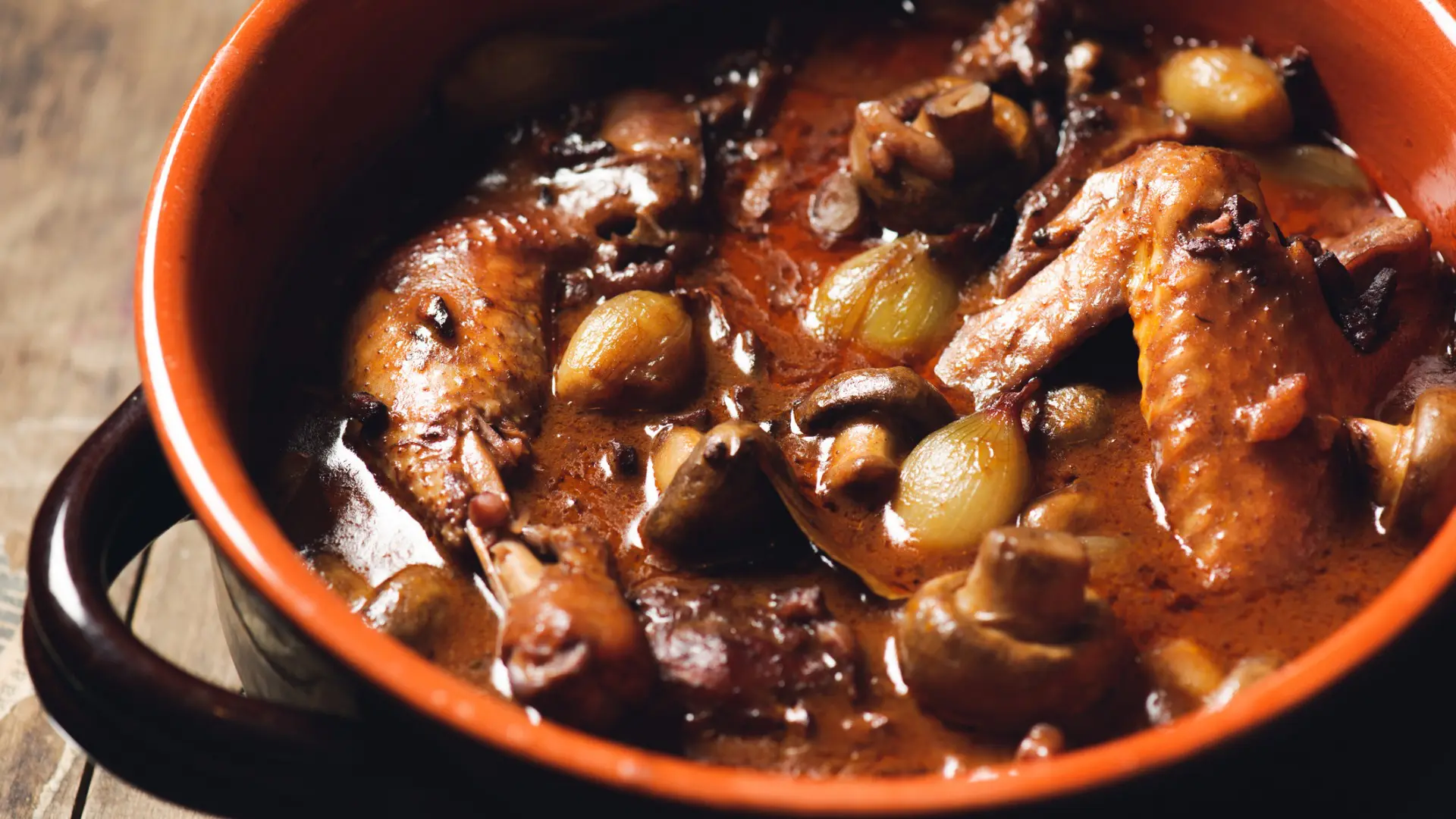
6. Steak au Poivre
Steak au Poivre (pepper steak) is another typically French steak dish using filet mignon. This premium cut is taken from the corner of the tenderloin and has a similar texture (and status) as Chateaubriand.
Steak au Poivre is pan-seared at a high temperature so as to crisp the exterior but maintain a rare or medium-rare center. Unlike Chateaubriand, the entire process is performed in the skillet with no roasting required.
The name comes from the buttery peppercorn sauce accompanying the steak, often laced with a generous splash of cognac.
Steak au Poivre overlaps with Steak Frites. Put simply – steak with fries. Pommes Frites are devoured around the globe but missing out on authentic French fries in a Parisian brasserie would be a faux pas.
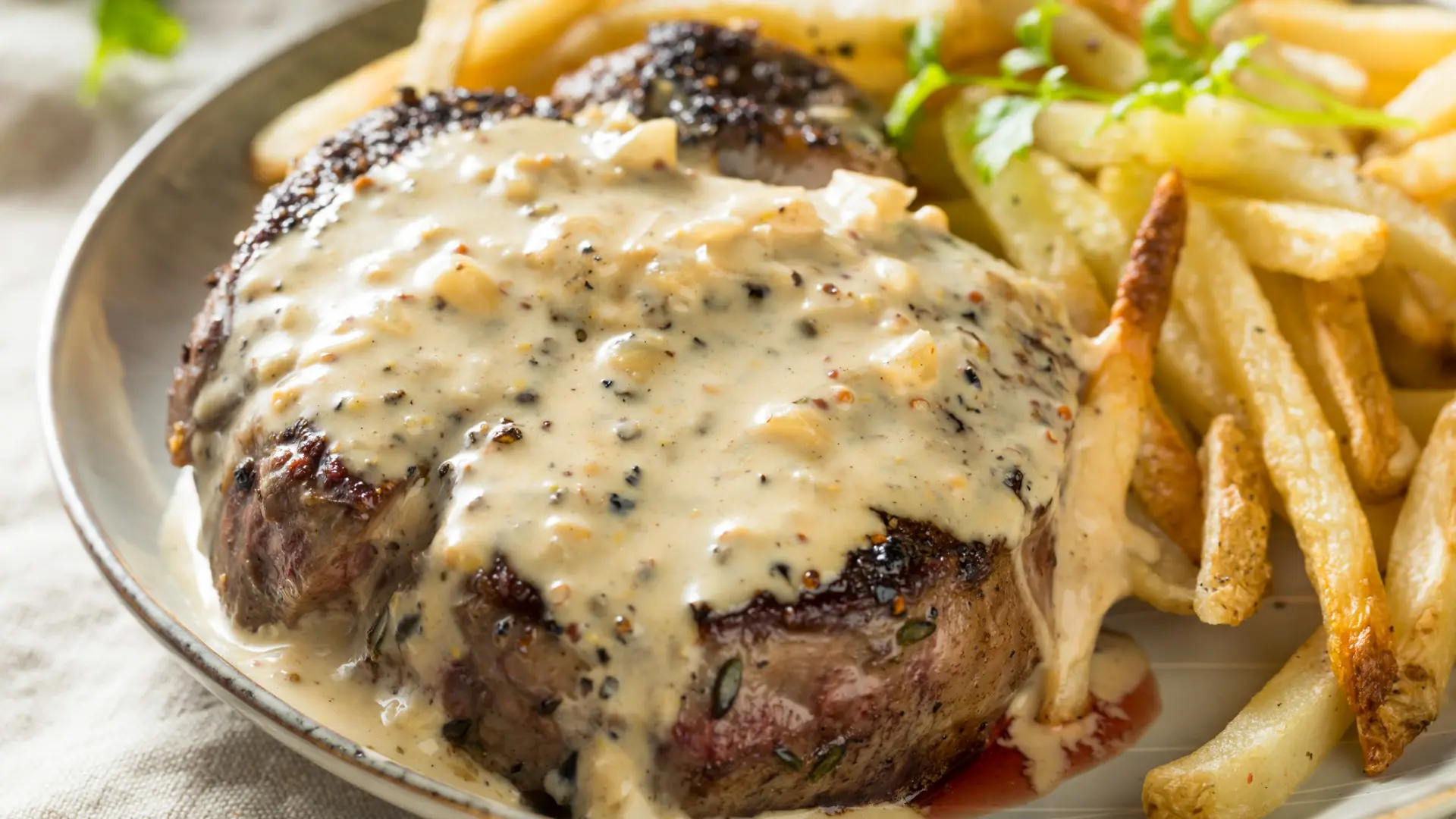
7. Ratatouille
Hailing from the Cote d’Azur, Ratatouille captures the charisma of the French Mediterranean. This Provencal vegetable stew is made from vine-ripe tomatoes and seasonal vegetables. As a summer dish, eggplant, zucchini, and bell peppers are time-honored ingredients.
The neatly diced vegetables are sauteed in crushed garlic and onion before being left to simmer with fresh herbs. The trick is not to plate up ratatouille too soon, or too late. A serving should be warm but not piping hot – it should get the stamp of approval from Goldilocks.
Once ready, Ratatouille is served with a crust of French baguette slathered in butter or misted with extra olive oil. It works as a main course for vegetarians or a shared side plate alongside poultry, game, and fish.
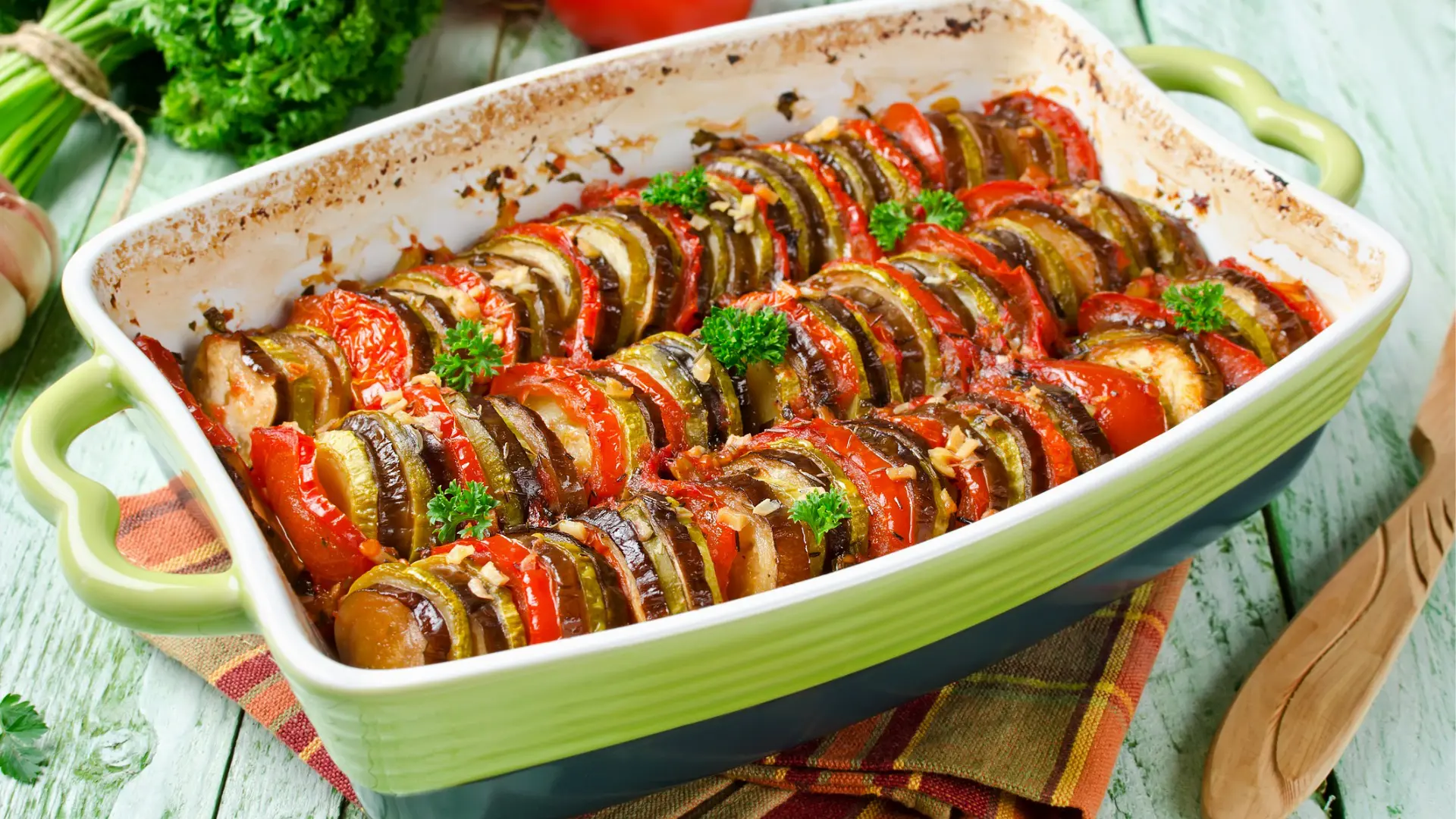
8. Moules Marinieres
Mussels are emblematic of France’s seaside resorts but you can also savor them at brasseries in the French capital. Prepared with simple ingredients and served with a slither of crusty baguette, mussels are a delicious starter or main course.
Moules Marinieres (sailor-style mussels) sees a creamy broth of white wine, garlic, shallots, thyme, parsley, lemon, and bay leaves. Butter is added to create depth and using the bread to mop the sauce is encouraged.
Muscadet is the go-to wine for marinating Moules Marinieres and should be served alongside the dish. If another wine is used, the server or sommelier will suggest the pairing.
Adaptations of Moules Marinieres appear in different regions. Chefs in Normandy add creme fraiche to their broth and swap wine for cider to create Moules a la Creme Normande (Normandy mussels).
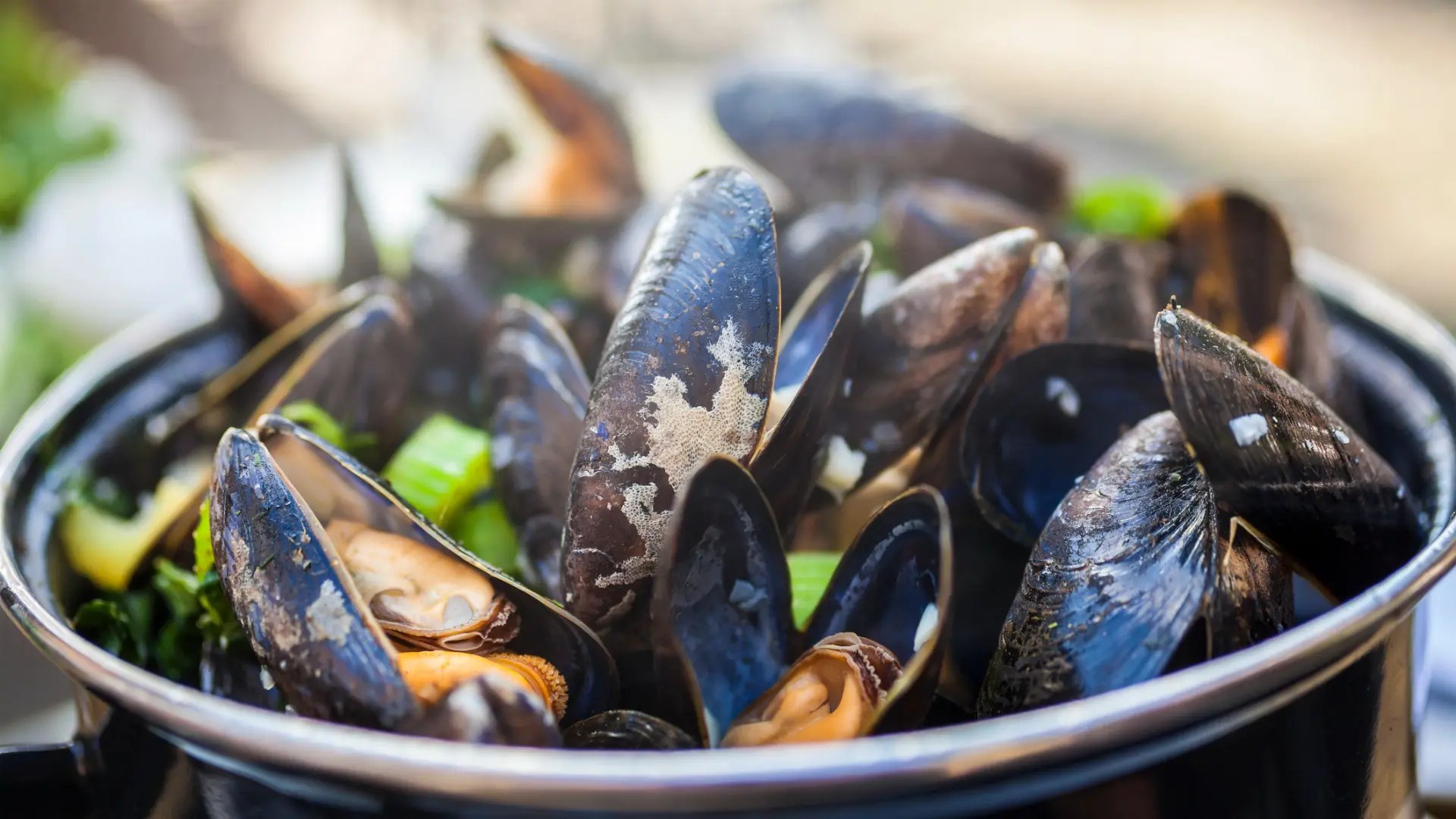
9. Cassoulet
It’s not all Haute Cuisine. Some of the best dishes to try in France are of surprisingly humble origins – although they do polish up nicely in fine dining restaurants.
Often regarded as a staple of the best French food for a reason, Cassoulet (slow-cooked stew) is a wholesome meat and white bean stew from southwest France with a questionable origin story.
Legend has it that Cassoulet was conceived in Castelnaudary during the Hundred Years’ War. Ingredients were thin on the ground, so the besieged townsfolk assembled all the meat and beans they could find in order to rid themselves of the English. Historians are skeptical but the dish, in its numerous guises, is a hit.
Castelnaudary recipes call for pork loin, sausages, and lardons. Carcassonne and Toulouse both stake a claim on having created the mother Cassoulet. Chefs in the former favor mutton and the latter opt for duck confit.

10. Bouillabaisse
Bouillabaisse is another traditional French dish with modest roots. This fish stew originated in the country’s oldest city, Marseille, founded by the Greeks sometime around 600 BC. It went on to flourish as a seaport and fishing hub.
Fishermen in the region of Provence put their heads together to find a solution for the bony rockfish and meager scraps cast aside by local markets.
Rascasse and other leftovers were thrown into a bubbling broth of olive oil, garlic, onion, fennel, and tomatoes. Provencal spices – thyme, saffron, and parsley – combined with orange peel are the markers of authentic Bouillabaisse.
The name Bouillabaisse compounds the Provencal verbs bolhir (to boil) and abaissar (to simmer). That’s how the fishermen went about preparing their lunch, by gradually adding the ingredients to the boiling vat, then reducing the heat to seal the flavors.
Bouillabaisse is served with Rouille, a garlic and saffron-based sauce with the texture of mayonnaise.

11. Tartiflette
Tartiflette is the creme de la creme of alpine dining. This nourishing apres-ski dish is consumed alongside Fondue, Raclette, and Pinot Noir after a day slopeside. It originates from Savoie in the French Alps and wriggled its way over the border to Italy’s Aosta Valley.
Bearing similarities to the much-loved side dish, Gratin Dauphinoise, Tartiflette is a comforting blend of sliced potatoes drenched in cream, white wine, lardons, and onions. A dense coating of Reblochon cheese from the Haute Savoie region is the magic ingredient.
This unpasteurized cheese is aged for a minimum of three weeks to cultivate a nutty, earthy taste. Strips of creamy Reblochon and its rind are used as the topping for this indulgent side or main course.
Croziflette is a cousin dish with square-shaped pasta in place of potatoes.
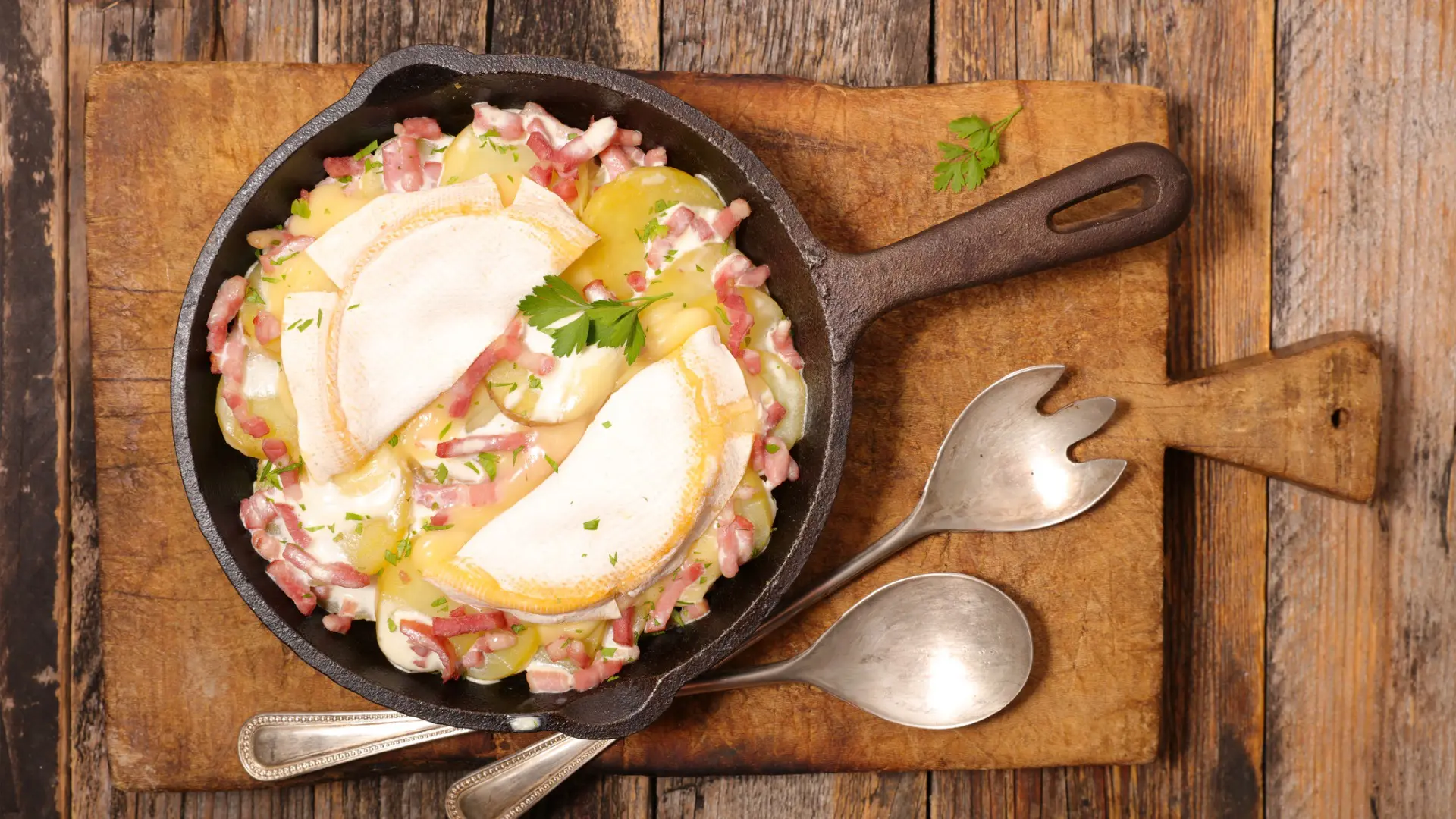
12. Salade Nicoise
Salade Nicoise is an elegant salad dating from the 19th century in the stunning French Riviera city of Nice. There are whispers that the Provencal salad may have originated as a sandwich, the Pan Bagnat.
The earliest incarnation was a simple dish of fresh tomatoes, olive oil, and anchovies. This trio was joined by bell peppers and olives. Crisp lettuce, hard-boiled eggs, and tuna were late additions.
Recipes vary from kitchen to kitchen, with other variations using green beans, boiled baby potatoes, and capers. Fresh tuna steak is occasionally used, although canned tuna packed in olive oil reigns supreme.
Salade Nicoise is the perfect lunch or supper during the Mediterranean summer.
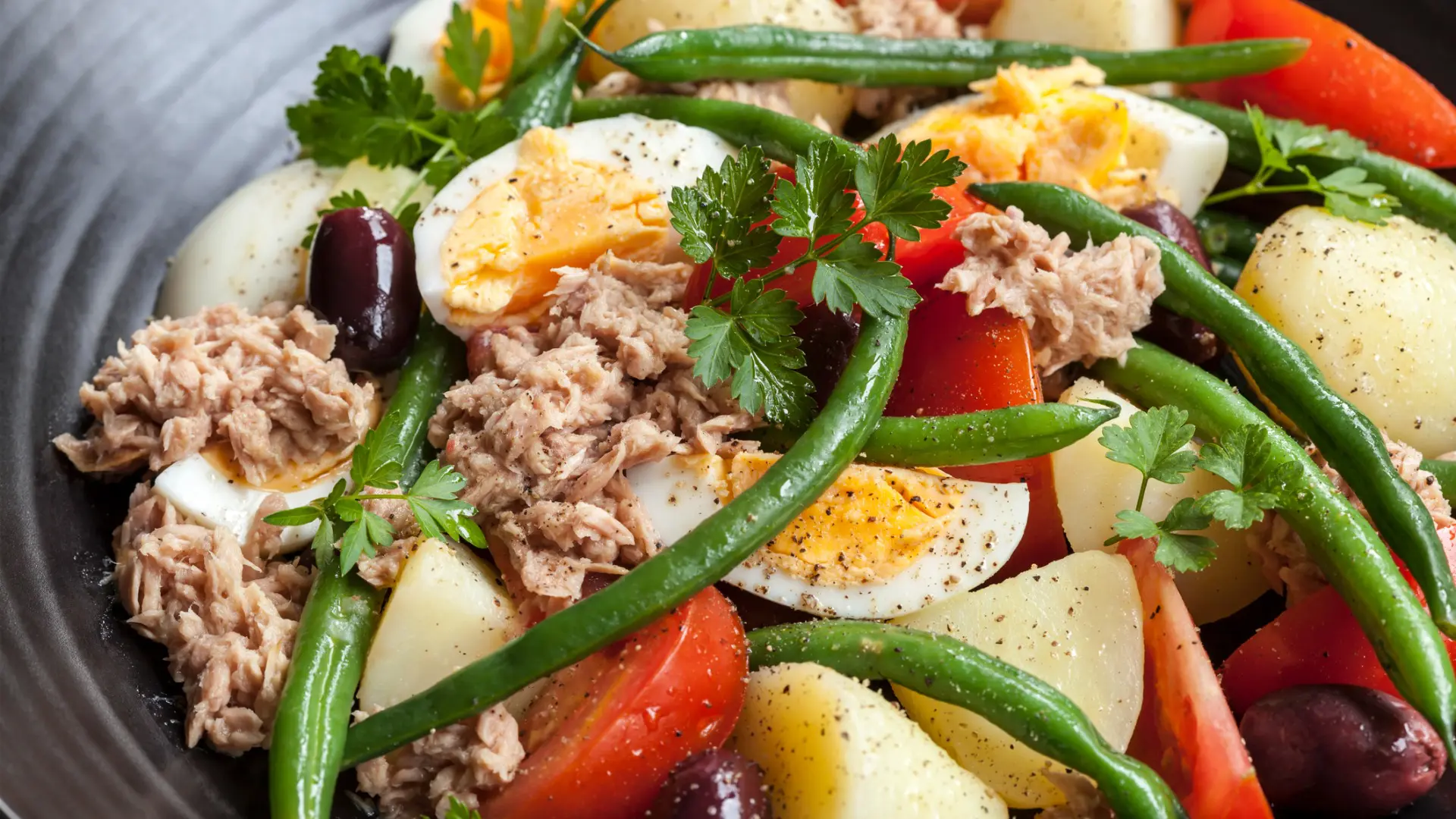
13. Crepes & Galettes
One of France’s most successful food exports has yet another fuzzy history. Pancakes may have originated in Ancient Greece before becoming auspicious to the Romans. La Fete de La Chandeleur is an annual celebration of Crepes held every February in France which may have roots in a Roman festival.
French Crepes are wafer-thin pancakes made from a smooth batter of wheat flour, eggs, milk, butter, and sugar. They’re either rolled or folded around a sweet or savory filling.
Crepes are sold at restaurants, kiosks, and creperies as a snack, dessert, or lunch on the go. They’re versatile enough to enjoy with preserves, chocolate sauce, fruit, cheese, vegetables, and cured meats.
Brittany, the birthplace of the modern French Crepe, is the best place to sample Galettes. Breton Galettes are crispy pancakes made from buckwheat flour topped with cheese and a runny egg. Popular in southern France, Crepes Suzette are prepared with caramelized sugar, citrus zest, and an orange liqueur.
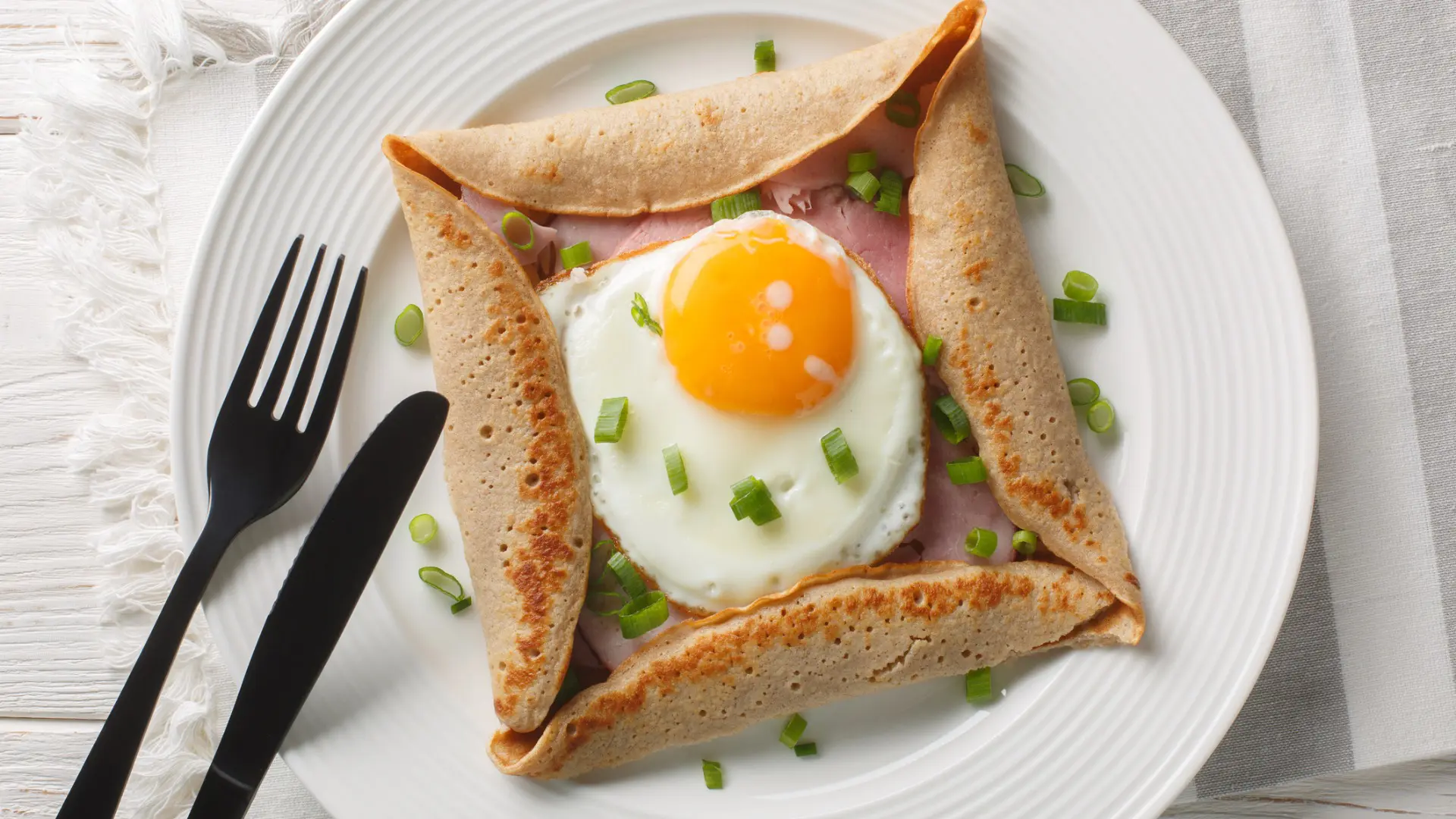
14. Creme Brulee
No list of the best French food would be complete without the addition of a dessert or three. There are just as many sweet dishes you must try in France as there are starters and main courses. Start with classic Creme Brulee, an inherently French desert – although England and Spain will beg to differ.
The secret to a successful Creme Brulee is to strike a contrast between the silky custard filling and its caramelized sugar topping.
Much like Souffle, Creme Brulee is a challenging dish to conquer and requires patience and skill. A blow torch is needed to master the hardened topping, which should deliver a crack as satisfying as the taste. This is a light, delicate dish that balances heavy mains or multi-course meals.
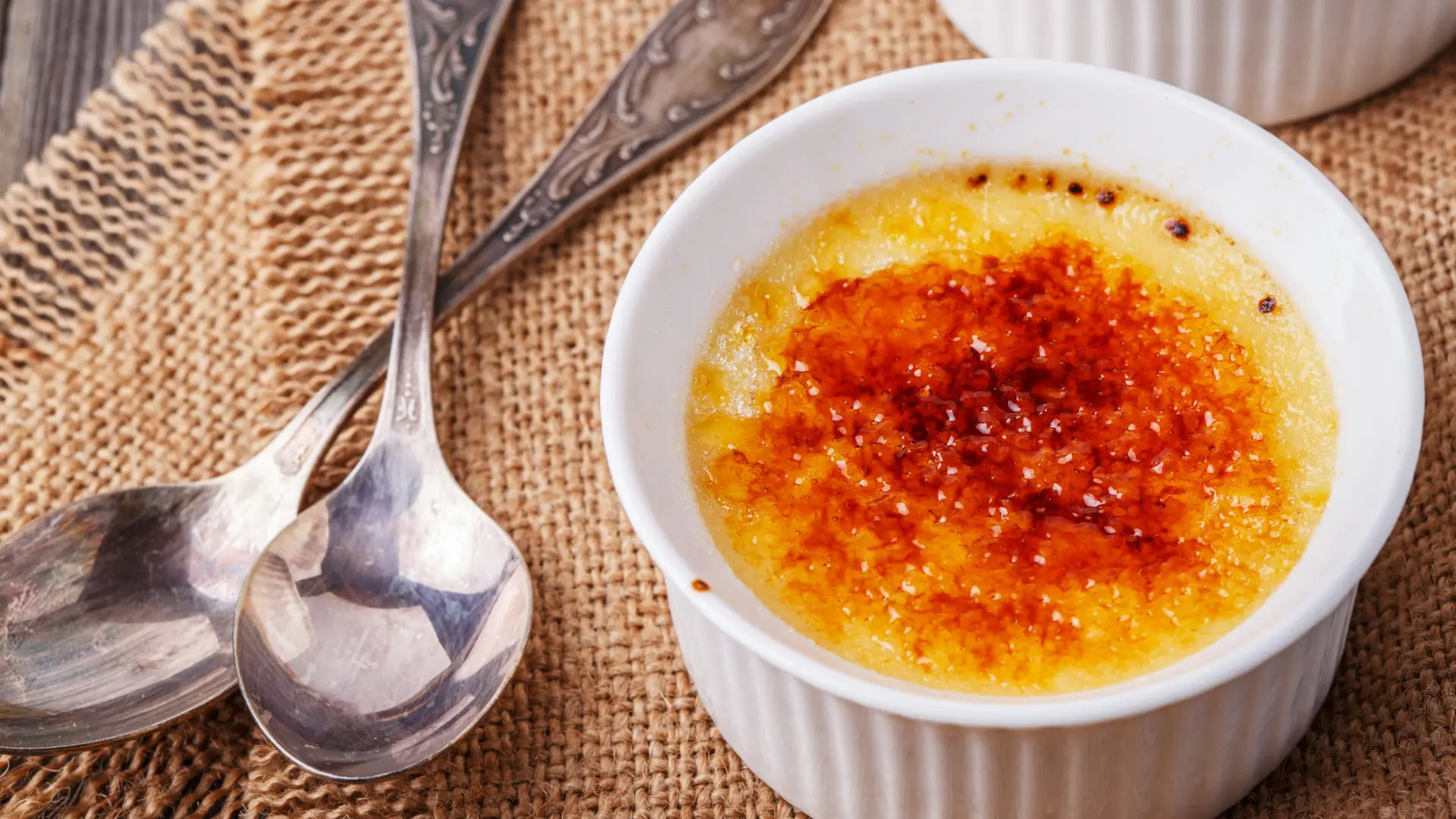
15. Tarte Tatin
Tarte Tatin was created by the sisters Stephanie and Caroline Tatin at their hotel in the Loire Valley in the late 19th century. This sweet pastry and its unconventional cooking method became an accidental signature dish.
Also known as Upside-Down Tart, Tarte Tatin consists of apples that are caramelized on the stove before being placed in the oven with the pastry base on top. The tart is then flipped back to apples-on-top when plated up.
Rumor has it that Tarte Tatin resulted from a kitchen mishap. These rumors are unfounded, though, and it was probable that the entrepreneurial sisters planned the recipe.
While apples are standard, peach, plum, pineapple, and quince are common extensions of the beloved puff pastry pudding. The same method is borrowed for savory tarts.
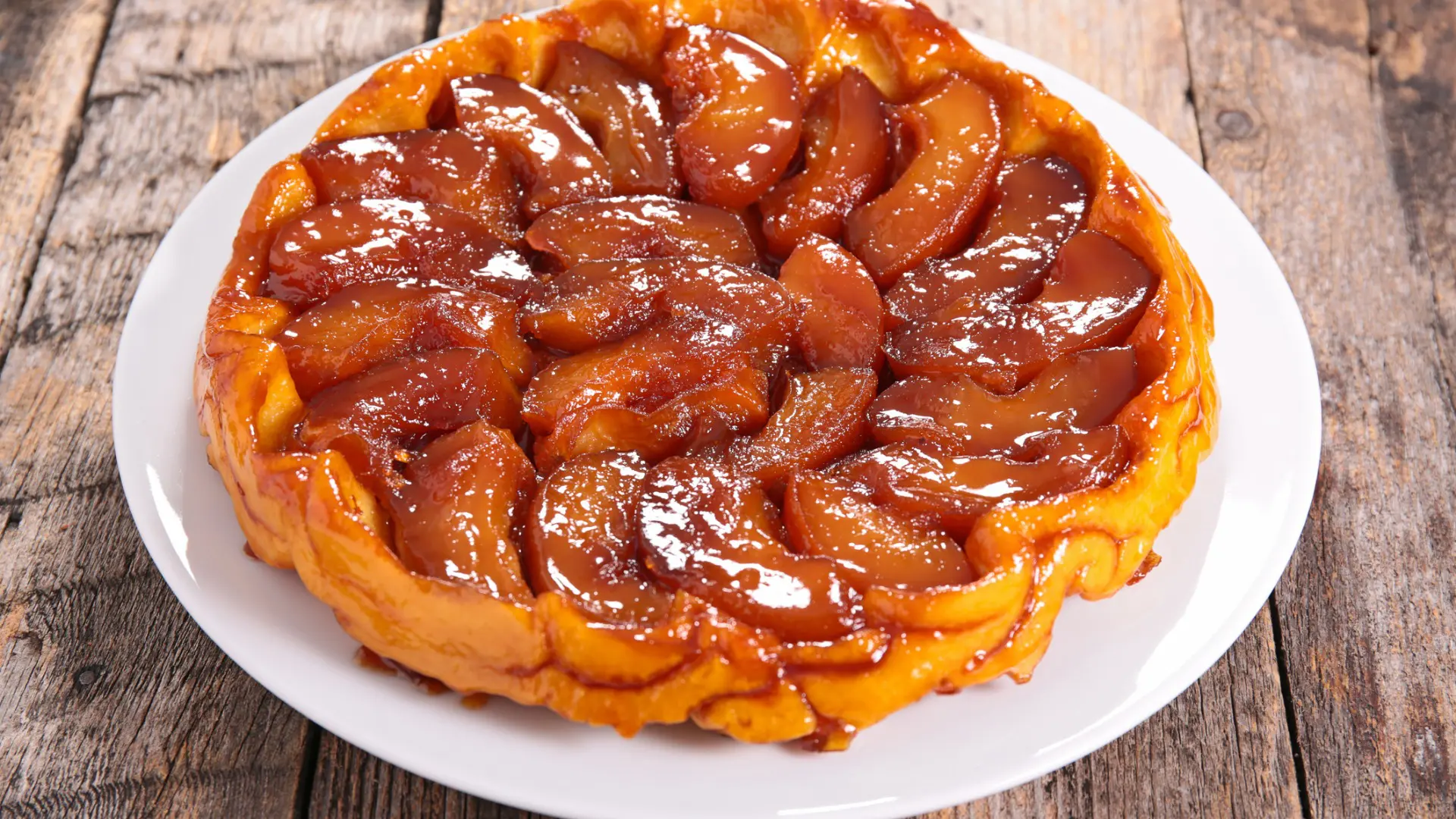
Savor The Best Food in France With JayWay
We’re sure that, by now, this list of the most famous French dishes has you craving for a trip to stunning France. From a week in the City of Light to a two-week itinerary across the best of France, JayWay Travel has you covered.
For foodies, we can also curate a trip across the tastes of France and Spain or a culinary journey through France and Italy. This way, you’ll have the chance to try not only the best French food but also get acquainted with the finest Spanish dishes or indulge in the unique flavors of Italian cuisine on the same trip.

Born and raised in Athens, Maria’s passionate about travel and storytelling, a combination that makes her ideal for her role as our content manager.